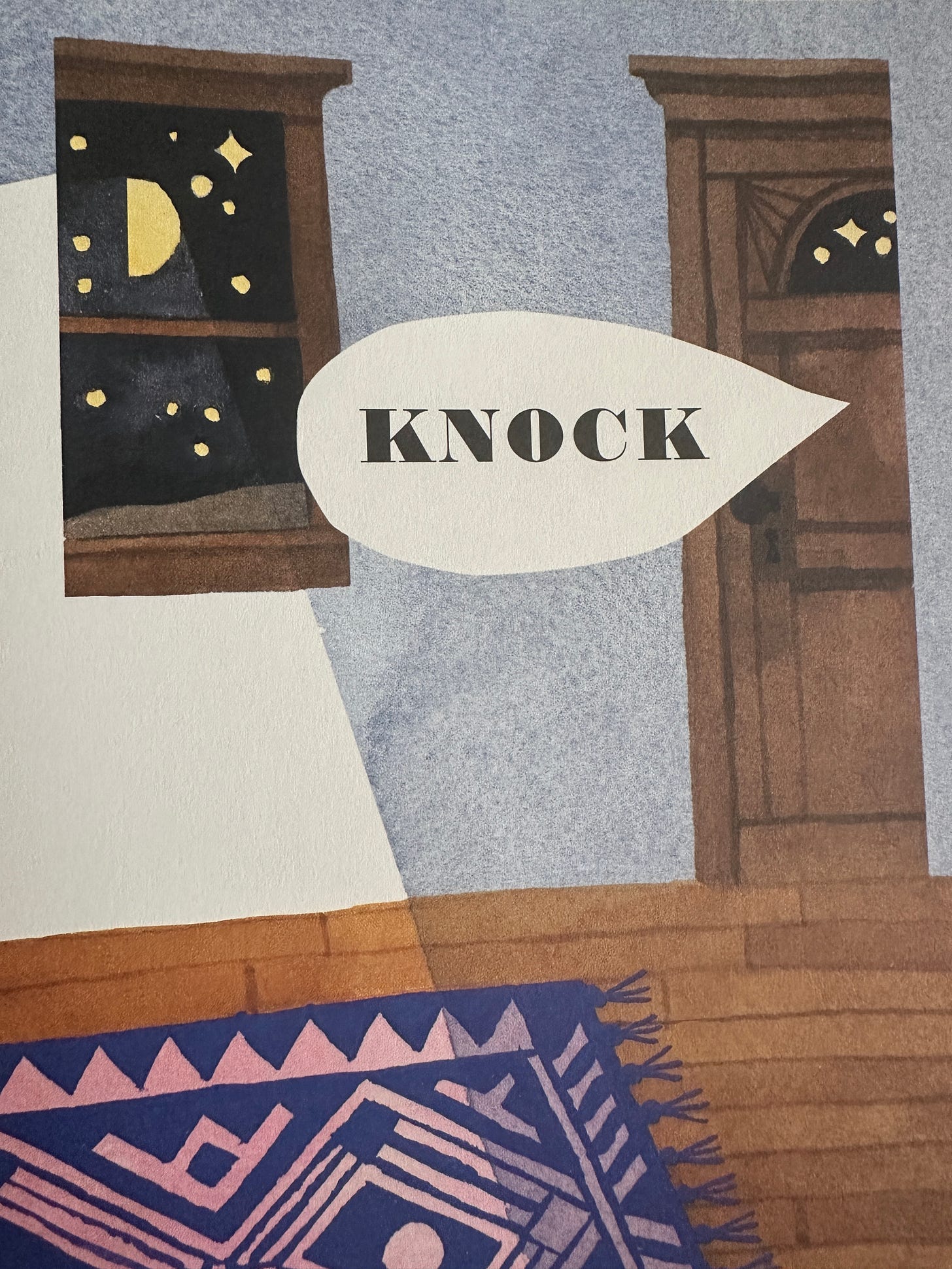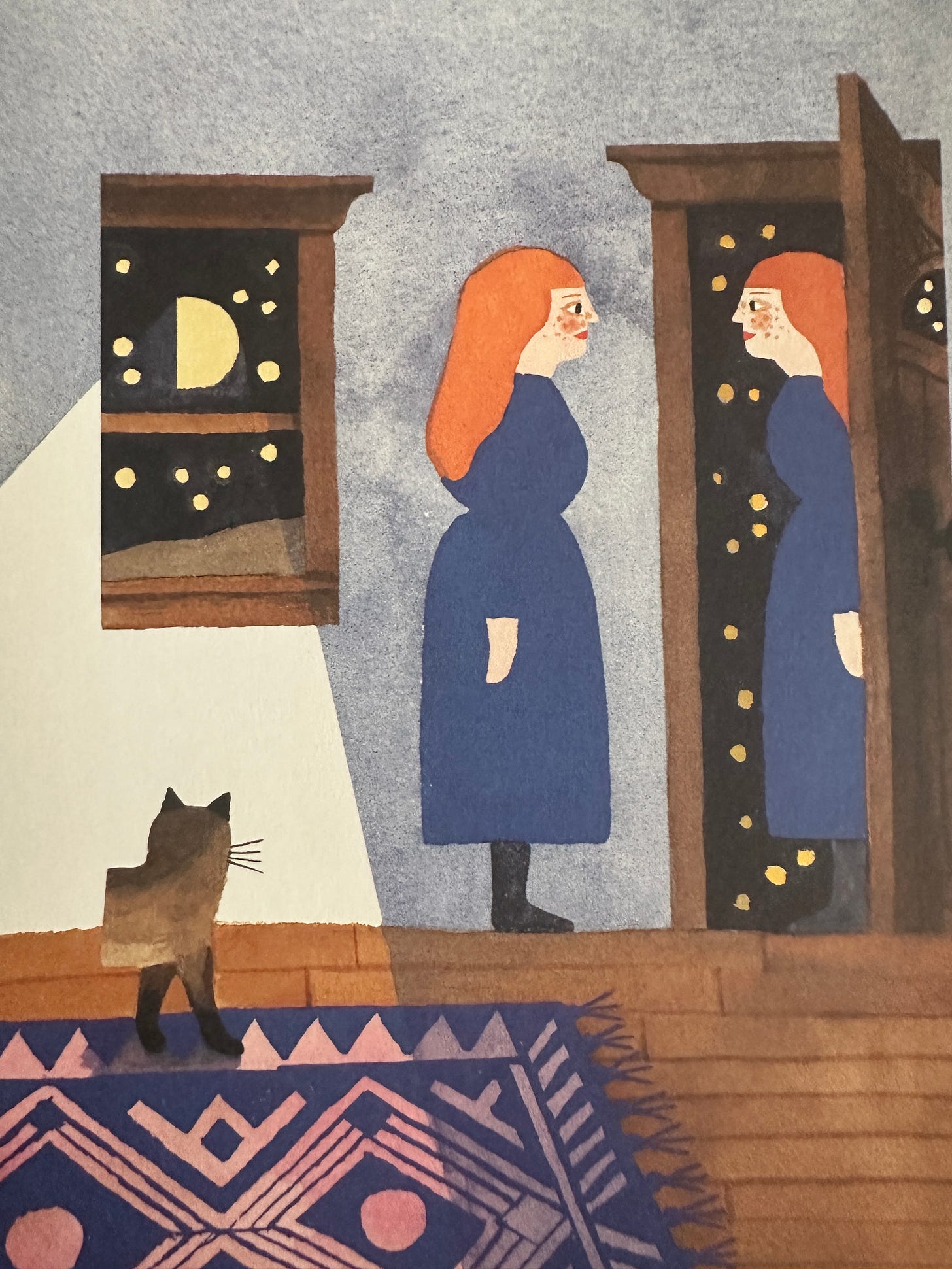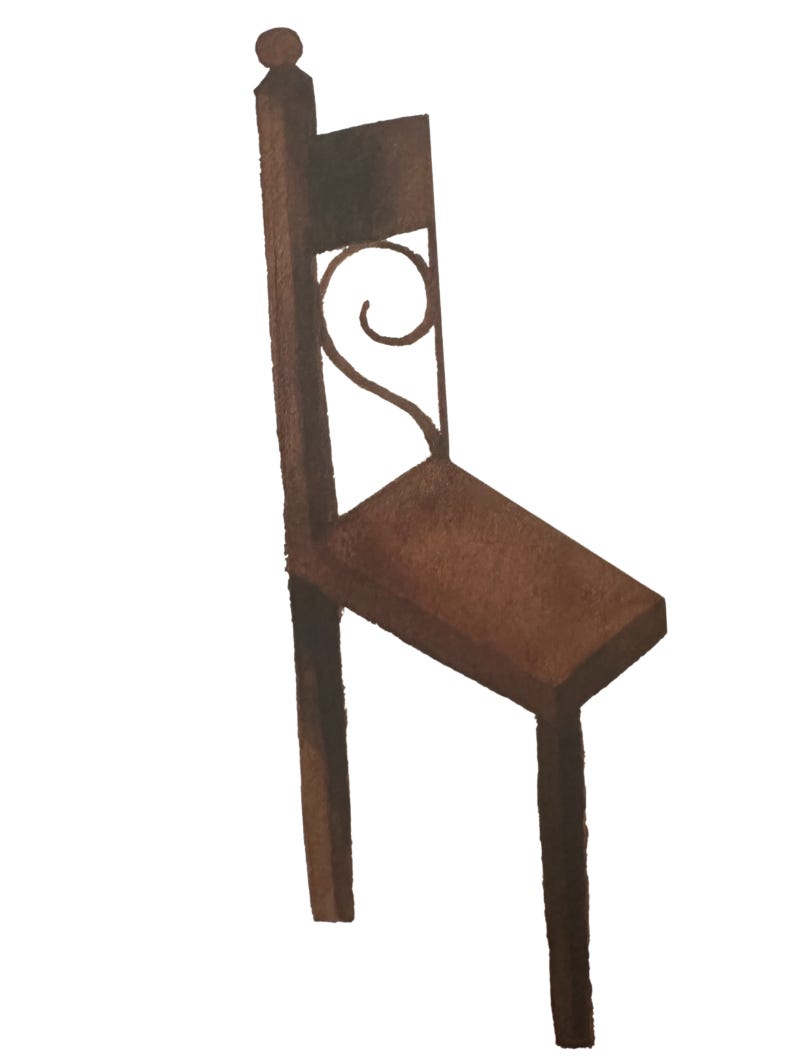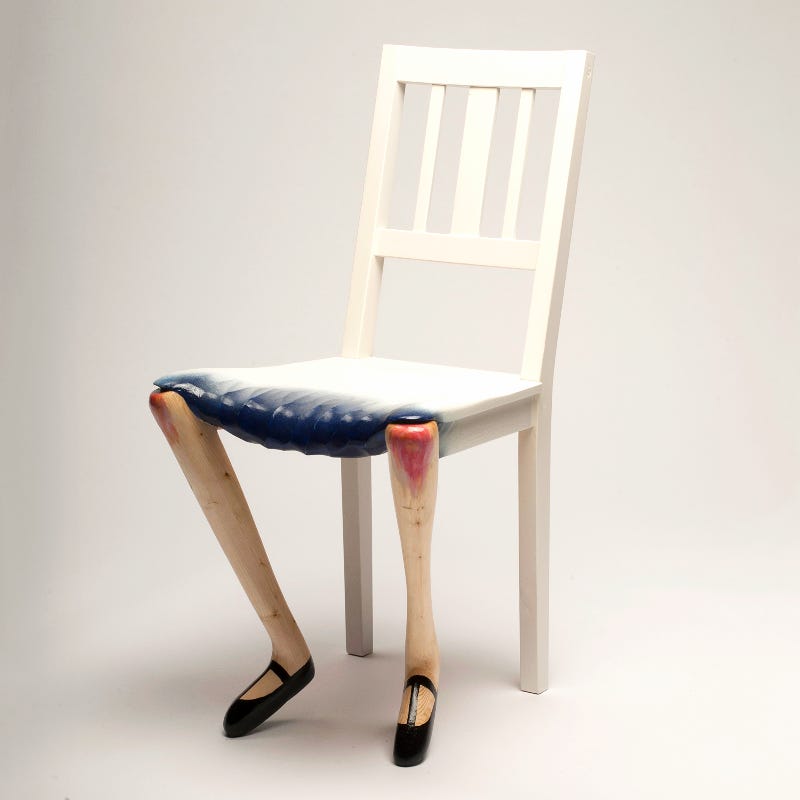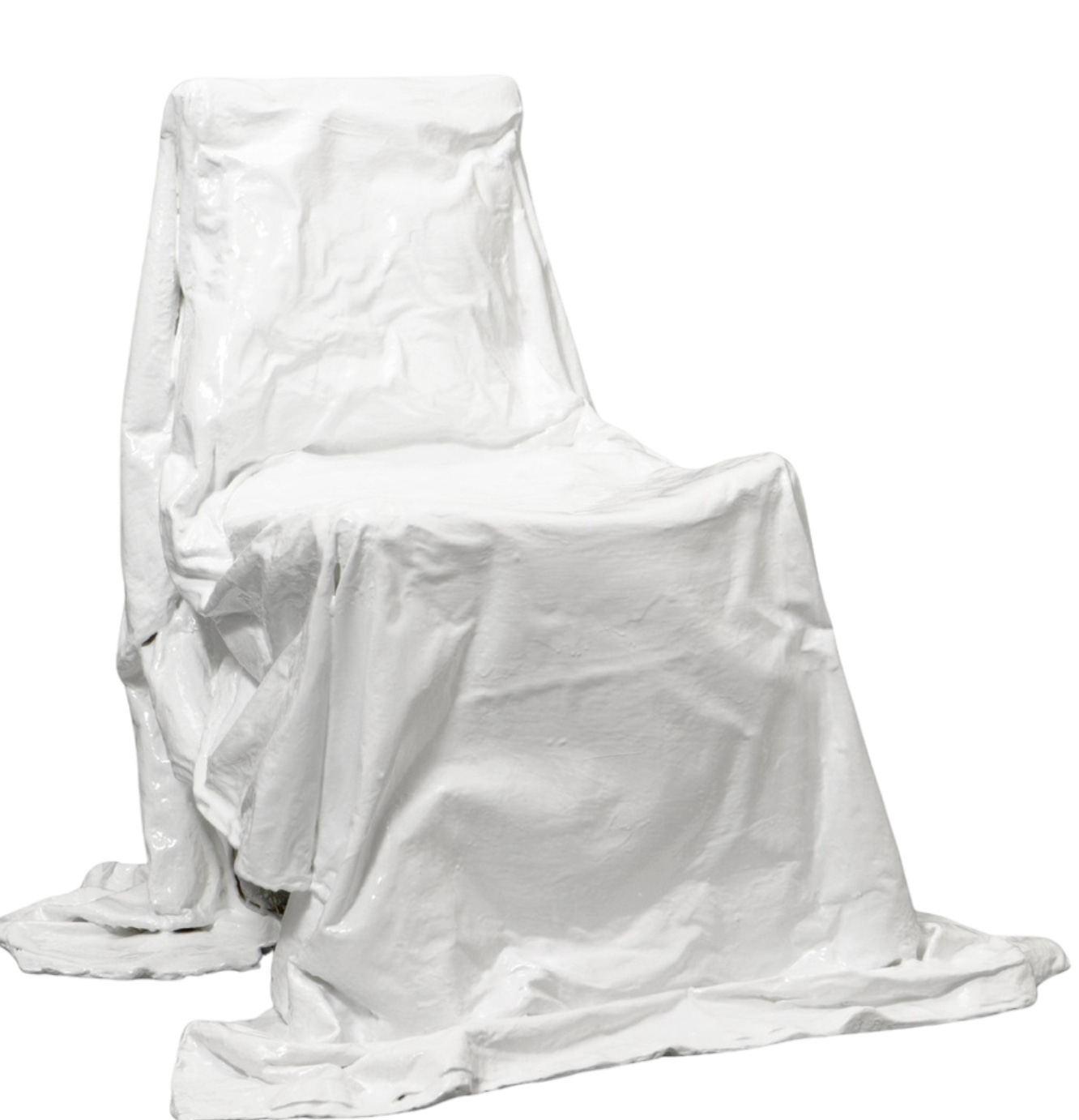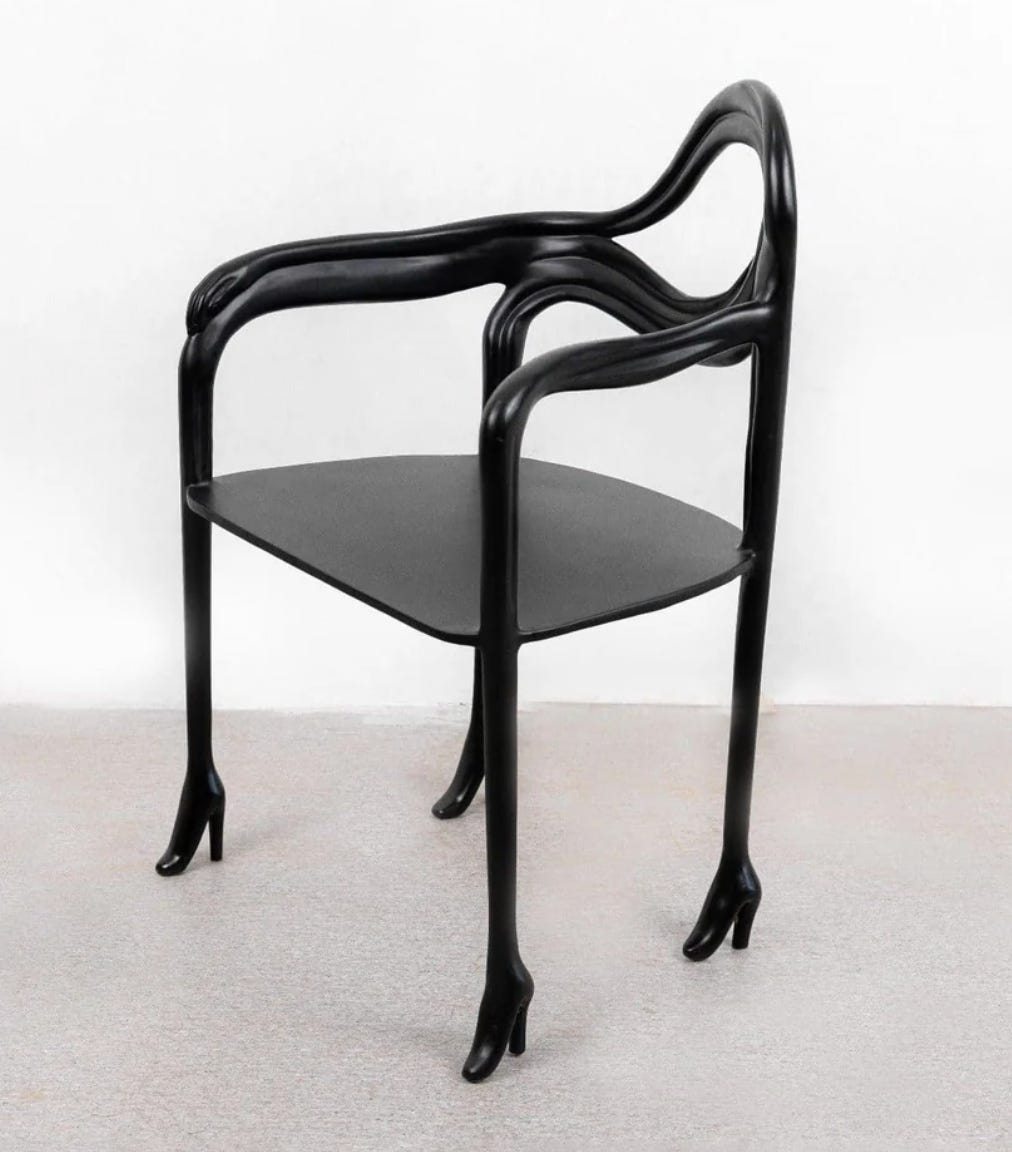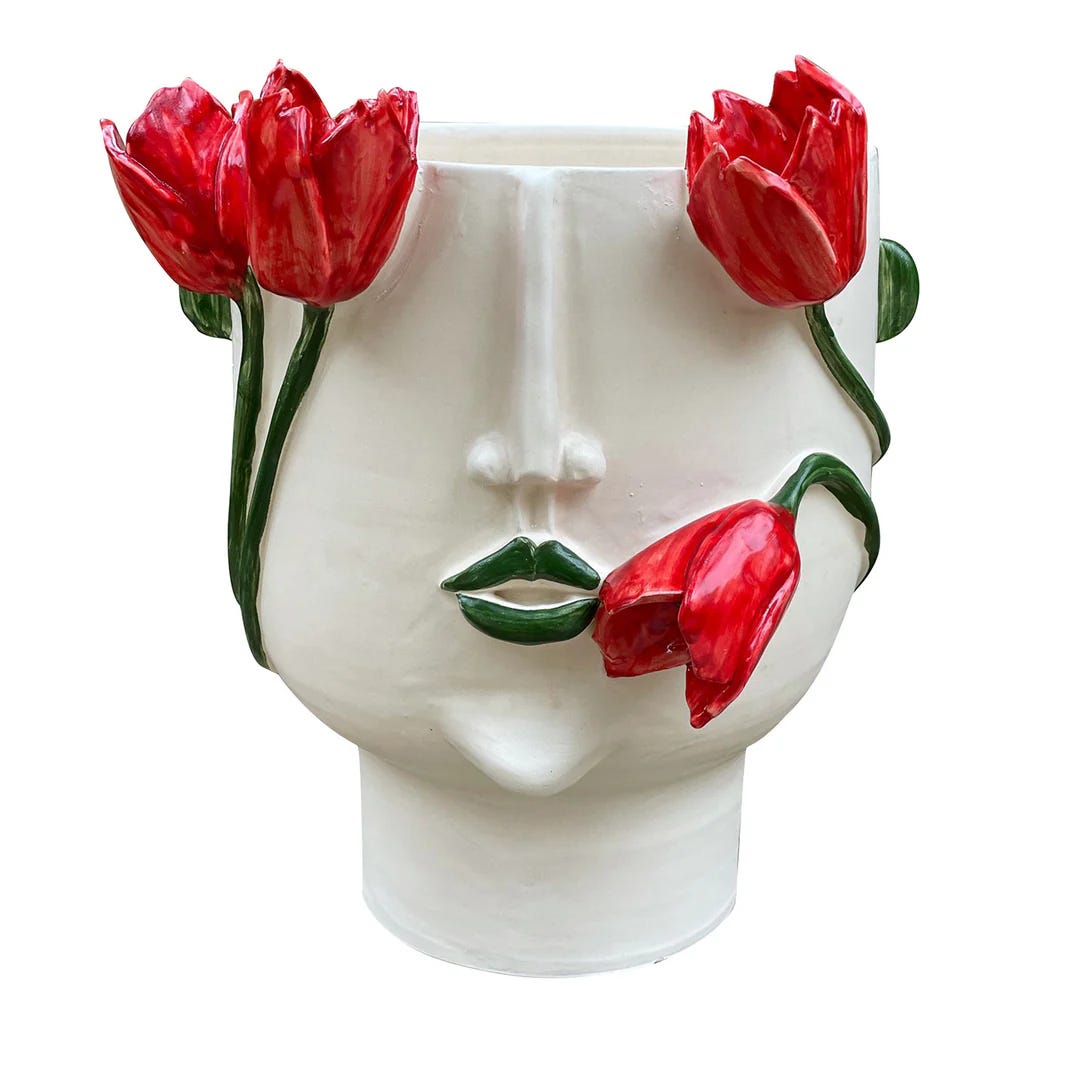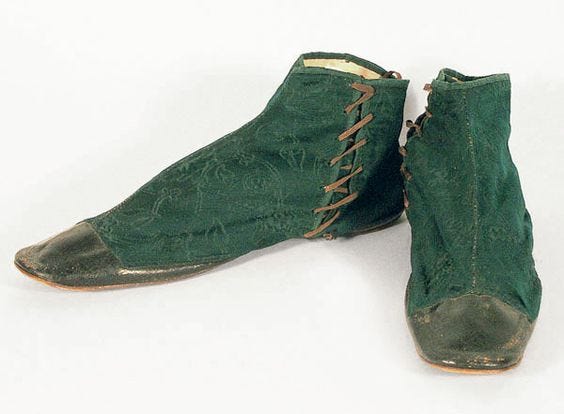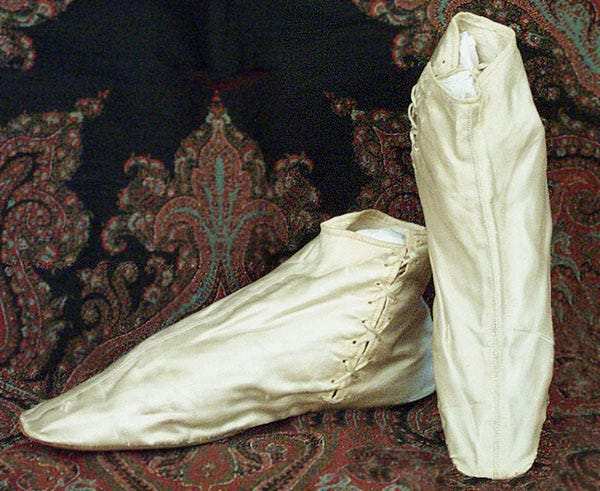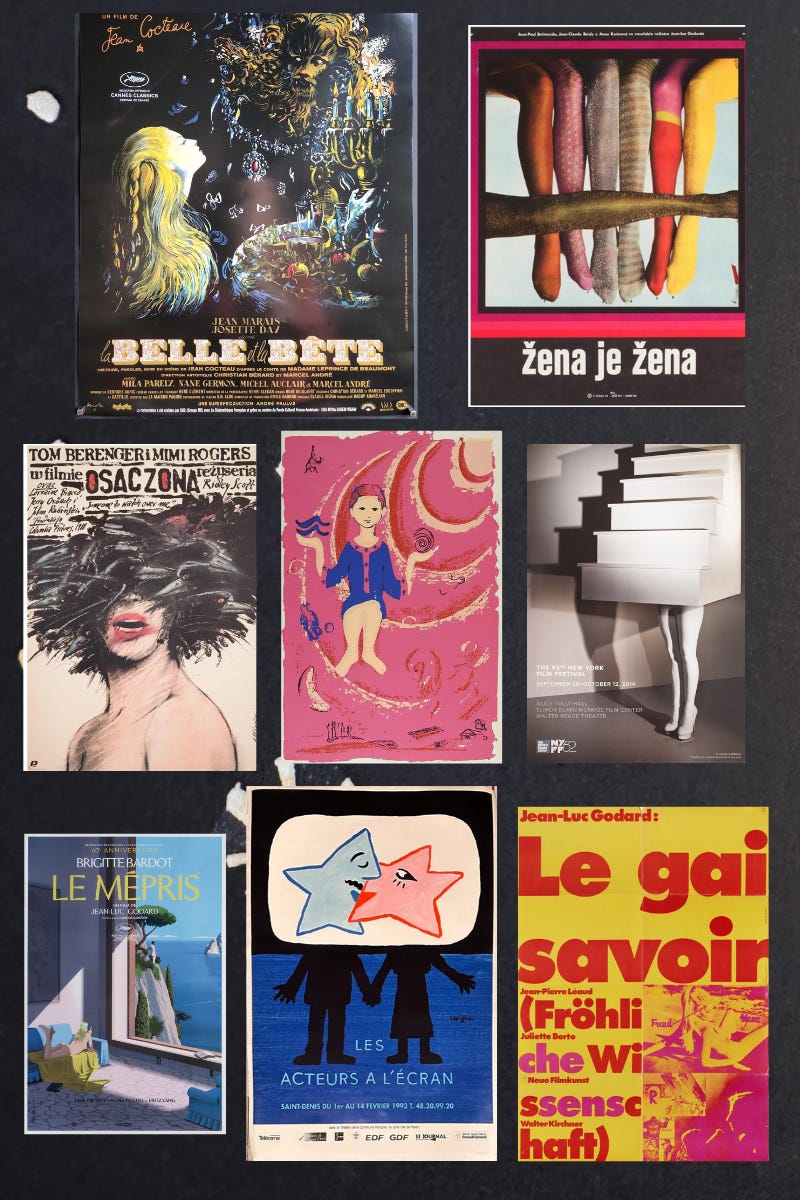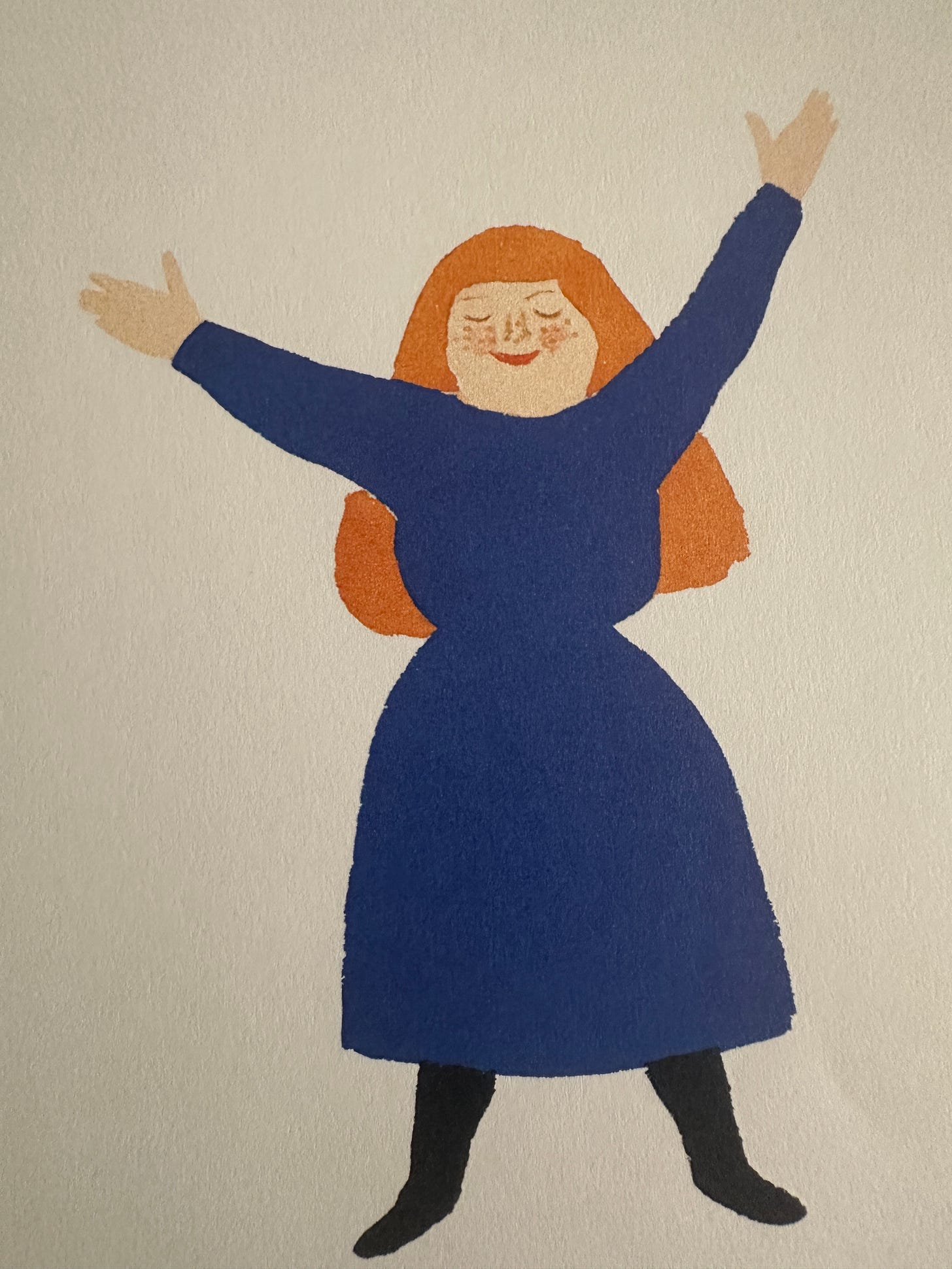In The Half Room
A celebration of the surreal
IN THE HALF ROOM
by Caron Ellis
A tale of halves and wholes, mystics (aka cats), and finding oneself in the uncomfortable and fascinating child like state of liminality.
Liminality an anthropological term, derived from the Latin limen, which means ‘threshold’. Liminality refers to the ambivalence, confusion, or disorientation experienced in the middle stage of a rite of passage.
The first or pre-liminal stage is the stage of separation; the middle or liminal stage is the stage of transition; the third or post-liminal is the stage of re-integration.
During the liminal stage, the participant’s identity, their relationship to their environment, family, and, more broadly, society, as well as their relationship to time, space, and existence as such, is in flux.
In more general terms, liminality refers to a state of flux and in-between-ness in which the dominant or governing logic of a given situation is temporarily suspended.
To be in a state of liminality is in itself surreal so why not make art about it!
The art of Surrealism aims to revolutionize human experience.
It balances a rational vision of life with one that asserts the power of the unconscious and dreams. The movement’s artists find magic and strange beauty in the unexpected, uncanny, disregarded and unconventional.
At the core of their work is the willingness to challenge imposed values and norms, in the search for freedom.
The word ‘surrealist’ (suggesting ‘beyond reality’) was coined by the French avant-garde poet Guillaume Apollinaire in 1917 as the preface to his play —
The Breasts of Tiresias Plot
Thérèse is a bored housewife, fed up with her tedious husband and more interested in being a soldier. As she dreams of how life would be if she were a man, her breasts (in the form of balloons) float up into the air and explode, as she starts to grow a beard.
She becomes a powerful general and is off to war. Her husband in turn becomes a woman, produces 40,000 children (all in one afternoon), which is more than the town can feed. In the end the pair reunite to make love not war.
In the play, Thérèse, is inspired by Theban soothsayer Teiresias who changes her sex to obtain power among men, with the aim of changing customs, subverting the past, and establishing equality between the sexes.
Pietro della Vecchia Le Devin Tirésias se métamorphosant en femme
MOTHERHOOD AKA THE ART OF ARGUING WITH YOUR SELF
by In The Half Room
*TRIGGER WARNING FOR MARITAL DISCOURSE. Please skip if this is a tender topic. I’m with you <3
…
I am married and The Marriage is its own character in my life.
In order to be healthy The Marriage has needs. Its needs are: to be nourished, protected, honored and respected.
The Marriage has goals. Its goals are: to create the house for ourselves and our children to thrive in.
The Marriage is coming up on its 5 year wedding anniversary.
Isn’t that nice?
Oh shit. Look out!
We’ve been fighting this entire week. I want to rip my breasts off and go to war. I am so furious. So indignant my needs aren’t being met. So passionate about my POV!
I am Joan of Arc. My therapist calls her “The Advocate” but I like Joan.
Books will tell you that fighting is natural — what’s important is to learn how to do it.
I know how! I’m Joan of Arc for fucksakes. What you do is identify who is the cause of your current discontent, search your soul for all the pain you’ve ever felt related to it, and then punish your opponent as hard as you can in whatever way you can!
For example, I like to tell them how they have wronged me and what they should be doing instead. The meanest things I can spit out I do.
Right?
Or? No?
That’s not it, huh? That doesn’t help The Marriage?
Oh I know. You distance yourself! Yes. You put your nose up in the air, lock doors, put up walls, and a lot of space between yourself and your opponent err partner — and you enjoy the peaceful space with just you— until one of you breaks and humbly sees how wrong they are, and then come back together so they can grovel!
No?
So what? I’m supposed to like pause till I’m emotionally regulated and then work with him? Understand his POV? How? He has no valid POV as far as I can see.
“I should have a partner who xxx”
“I want to have someone who makes me feel xxx”
“You need to work on XXXX and won’t!”
“How could you xxx to me?”
“How do you not know xxx”
“You need to xxxx in order for me to xxx!”
Basically…
“WHY ARE YOU NOT ME?!”
Oh, right, I am married to someone who is not myself. Fuck.
…
We’re two halves of a whole. He’s half The Marriage.
But I don’t want to be his better half when I can be a whole!
…
But, The Marriage.
Right, I’m not married to myself.
…
Oh no. Is he my better half?
Better half (the whole story)
Q: I’m curious about “better halves.” When did the term come to mean spouses?
A: When “better half” appeared in the mid-16th century, it meant “the larger portion of something” or “more than half,” according to the Oxford English Dictionary.
The earliest OED citation is from a religious treatise defending the Roman Catholic Church against criticism by the Church of England:
“it woulde well lacke the better halfe of jx. yeres [nine years].” From A Return of Untruths (1566), by the Roman Catholic theologian Thomas Stapleton, responding to a treatise by John Jewel, the Church of England’s Bishop of Salisbury.
The usual sense now, which the OED defines as “a person’s husband, wife, or (in later use) partner,” appeared in the late 16th century.
The first citation is from The Countesse of Pembrokes Arcadia, a pastoral romance by Sir Philip Sidney, published posthumously in 1590, four years after the author’s death:
“My deare, my better halfe (said hee) I finde I must now leaue thee” (the dying Argalus is speaking here to his wife Parthenia).
The dictionary doesn’t have any citations for plural versions of “better half.” The earliest examples we’ve found in searches of digitized books are from the 18th century. Here are two of them:
“ ‘I am happy to acknowledge, that, though we have no gods to occupy a mansion professedly built for them, yet we have secured their better halves, for we have goddesses to whom we all most willingly bow down.’ ” From Evelina (1778), by the English novelist Fanny Burney. (Lord Orville is speaking to Captain Mirvan.)
“I trust the example of our better halfs will tempt the ladies all to emulate those virtues which have made us for ever renounce the follies of fashion, and devote our future lives to that only real comfort which heaven has bestowed on mortals—virtuous, mutual, wedded love.” From The Ton; or Follies of Fashion (1788), a comic play by the Scottish author Eglantine Wallace. (Lord Raymond is speaking to Lady Raymond.)
In case you’re wondering, both “better halfs” and “better halves” were common in the late 18th century, but “better halves” has been the usual plural for the last two centuries, according to a comparison with Google’s Ngram Viewer.
The OED says the phrase “better half” has had two other senses, “a close and intimate friend” (1596) and “a person’s soul” (1629), but the first is now rare and the second obsolete.
We should add that in the spousal sense, “better half” is often used affectionately or in a semi-humorous way.
Finally, here are a few other alternatives for “husband” or “wife,” and the dates of their earliest OED citations: “spouse” (before 1200), “partner” (1577), “helpmate” (1815), and “ball and chain” (1921).
Semi-humors? Screw you.
He’s not my better half. I’m not his better half.
We are equals. Halves of whole. No sicker. No worse. No perspective that’s more true.
Just two halves of a whole The Marriage.
…
My goal is to create a metaphorical home for myself and my children to flourish in.
That’s The Marraige’s goal too.
OK.
…
Let me think. What can I do right now to support The Marriage?
…
No. I’ve tried everything! It’s him causing the breakdown!
He always starts it! I have so much on my plate. I do everything!
(deep breath)
OK. When we argue I often think it’s him who causes the fires between us but…
Maybe it’s me too?
Oh, it’s me too.
My chaos. My fantasy. My rage. My entitlement. My romantic individualist nature. My ancestors. My heart. My trauma. What my parents did or didn’t do. What I expect. My volume. My absence. My compassionate lack of understanding. My agendas.
My righteousness.
It’s things I can’t even see yet. Things I’m in the middle of. It’s just also me.
Me me me me me.
…
It’s him. But it’s me too.
…
And there is certainly no sense in arguing with myself.
I will win. I will lose. I am the whole thing.
The Marriage is me. The House is me. The children. My partner. We.
…
Truly, I am in liminality so don’t expect any big revelations except —
A great book for him and me is US by Terrence Real
…
And the best advice I ever got was “run toward The Marriage,” so please excuse me while I run to put our house back together because everything has been halved…
HALF CHAIR ON HALF A FLOOR
by In The Half Room
BENJAMIN NORDSMARK Fuco Ueda Chair
Philipp Aduatz Folded Chair
Surrealist Stiletto Accent Chair
Black Figure Chair (source unknown), Sarita Nanni Chair, Charlap Hyman & Herrero Deli Rose Chair, Ada Blecher Copula Chair, Chairchill Sculpture, Merve Kahraman Chair
HALF VASE
by In The Half Room
Wretched Flowers Vase
Corsi Design Vase
Patrizia Italiano Vase
INICERAMIQUE Vase
Francesco Ardini Vase, Reinaldo Sanguino Vase, Mid Century Plaster Vase, Niko June Vessel, SLORENCE Ring Vase
HALF CAT
by In The Half Room
HALF A CHILD’S HAT
by In The Half Room
La Coqueta Berret, Monnalisa Beret, Jacadi Beret, Garbo&Friends Beret, Vintage Fascinator, Catya Hat
TWO SHOES EACH HALF
by In The Half Room
Regency Era Half Boots: Ankle high boots for women, typically for outdoor wear, often made of kid leather, but sometimes of sturdy cloth, such as jean or even velvet. They are flat-soled, and laced up the front or the side.
“Emma was not inclined to give herself much trouble for his entertainment, and after hard labour of mind, [Lord Osborne] produced the remark of its being a very fine day, and followed it up with the question of: ”Have you been walking this morning?”
“No my lord, we thought it too dirty.” (Unpleasant, stormy.)“You should wear half boots.” After another pause: “Nothing sets off a neat ankle more than a half boot; nankeen galoshed with black looks very well. Do not you like half boots?”
“Yes; but unless they are so stout as to injure their beauty, they are not fit for country walking.”
– Jane Austen, The Watsons
HISTORY OF WOMEN’S HALF BOOTS - Jane Austens World
HALF A FILM
by In The Half Room
Row 1: Vintage French Beauty & The Beast Poster, A Woman is a Woman Poster
Row 2: 1980 Someone To Watch Over Me Poster, 1960s Serigraph, 52nd NYFF Poster
Row 3: Contempt Movie Poster, French festival of Cinema 1993 Poster, Le Gai Savoir Poster, Lily Aime Moi Poster (not pictured)
THE END
by In The Half Room
Our copy of In The Half Room was gifted to us by someone special who I cannot recall! Was it you? Please reach out so I can thank you!
….
The Author of US on…







